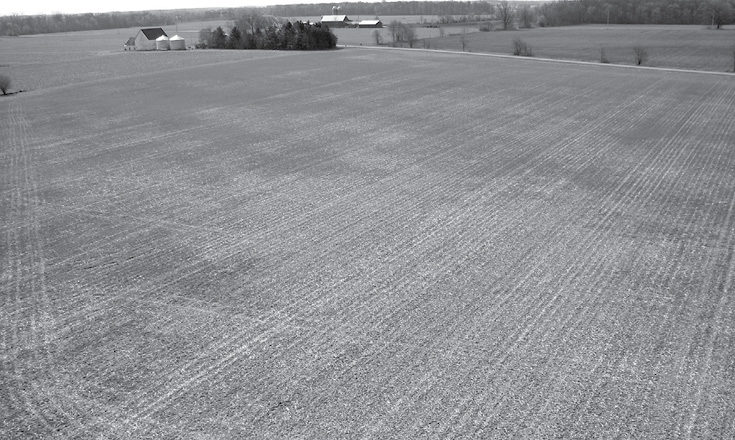No-Till Farmer
Get full access NOW to the most comprehensive, powerful and easy-to-use online resource for no-tillage practices. Just one good idea will pay for your subscription hundreds of times over.

The pilot's work was the first thing Bryan, Ohio, no-tiller Allen Dean questioned when cover crops aerially seeded last fall didn’t establish well on his farm.
But it turns out the answer was underfoot, not overhead.
Dean has been experimenting with different ways to establish his annual ryegrass and cereal rye cover crops.
“We started using cover crops extensively about 5 years ago and keep trying to use more and more every year,” says Dean, who has been no-tilling for more than 30 years. “We like what cover crops do for our soils.”
Cereal rye, annual ryegrass and tillage radish are now part of Dean’s regular wheat-and-soybean rotation. He no-till drills annual ryegrass or tillage radishes into wheat stubble starting in mid-August. Annual ryegrass is also his first choice following soybeans, but Dean has learned from experience that in northwest Ohio, annual ryegrass needs to be well established by October 1 — before soybean harvest — to survive winter.
“We like annual ryegrass because it has deep root structure and doesn’t grow as tall as cereal rye in the spring,” Dean explains.
He also likes the soil structure benefits he gets from the extensive root system of annual ryegrass. To get more acres of annual ryegrass established, Dean had a helicopter seed it into standing soybeans in 2008.
“The application pattern just wasn’t what we wanted,” Dean explains.
So in September 2009, Dean hired an airplane to seed annual ryegrass in some fields and cereal rye in others.
There was…